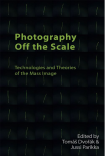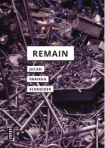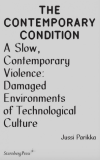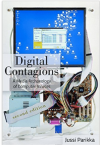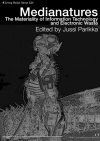Archive
The Environmental Audiotour at the Helsinki Biennial
Helsinki Biennial 2023 is now open and our Aarhus based research group was happy to be involved in the team of curators led by Joasia Krysa.

As part of our work, we also wrote the Environmental Audiotour that can be heard in specific locations in Helsinki and also online. Below a short introduction text to the tour that you can listen to both in English and in Finnish as “Ääniopastus kaupungin luontoon”.
Imagine immersing yourself in data as you discover the intricate architectures of environmental sensing that surround us.
The Environmental Audiotour takes us through different spaces and sites of Helsinki and Vallisaari, their past and future. Real and speculative stories unfold together with elemental forces in the extended urban environment, from water to air and from land to energy. The stories draw our attention to the ecological landscapes as we move through different ’islands’ in the city.
Written by Jussi Parikka, Paolo Patelli, and May Ee Wong, The Environmental Audiotour consists of six audiostories that can be experienced in the South Harbour near the Lyypekinlaituri (1st), in Vallisaari at the ruins of the old Weather Station (2nd), in Hietalahti (3rd), in the Kaisaniemi Botanical Garden (4th and 5th) and in Sörnäinen near the Uniarts Academy of Fine Arts – as well as online.
https://helsinkibiennaali.fi/en/event/critical-environmental-data-the-environmental-audiotour/
References
Samir Bhowmik, “From Nature to Infrastructure: Vallisaari Island in the Helsinki Archipelago.” Environment & Society Portal, Arcadia (Summer 2020), no. 28. https://doi.org/10.5282/rcc/9062.
J.R. Carpenter, This is a Picture of Wind. Longbarrow Press, 2020.
Lorraine Daston, Rules: A Short History of What We Live By. Princeton University Press, 2022.
Gary Genosko,”Four Elements” in: Posthuman Glossary, edited by Rosi Braidotti and Maria Hlavajova. Bloomsbury Academic, 2018.
Heikki Nevanlinna, Ilmatieteiden vaiheita ja vaikuttajia Suomessa. Societas Scientiarum Fennica, 2021
Dietmar Offenhuber, “Data by Proxy — Material Traces as Autographic Visualizations” arXiv:1907.05454, 2019.
Yoko Ono, “Painting for the Wind”, 1961.
Anna Lowenhaupt Tsing, The Mushroom at the End of the World: On the Possibility of Life in Capitalist Ruins. Princeton University Press, 2015.
The project was realised with support from the Helsinki Biennial and the Design and Aesthetics for Environmental Data project (AUFF, Aarhus University, 2022-2024) and the Weather Reports project (AHRC and DFG, 2022-2024).

Strange Weathers
I am very happy that our Strange Weathers special issue of Neural Magazine is out! It includes new texts, reviews, and interviews with for example Karolina Sobecka, Superflux, Lise Autogena and Joshua Portway, Open Weather, and Jana Winderen. Co-edited with Daphne Dragona, the special issue follows on from our Weather Engines exhibition in Athens (2022, Onassis Stegi) as well as the book we published in that context: Words of Weather, a new vocabulary for a political ecology.
In further news, the exhibition and public program will be continued in Spain in Autumn 2023. A separate announcement on that is forthcoming. In the meantime, enjoy the special issue (and considering subscribing to Neural – or recommending your library to do that).

The cover of the special issue features Sophie Dyer from Open Weather group, from their workshop in Athens in 2022.
Antikythera
The new Antikythera program headed by Benjamin Bratton launches, and I am happy to be involved as affiliated faculty.
It is a “program reorienting planetary computation as a philosophical, technological, and geopolitical force” and you can check out the website for details as well as how to apply. The selected studio participants (Los Angeles) will be fully supported with a housing provision and a monthly stipend of 4000 USD per month. The program also covers the additional research and field trips.
Trois essais sur l’écologie des media – translations in French and Spanish
Two new translations of my work came out from the printers just before the winter holidays. Two collections consisting of three essays of mine are published in French (T&P Publishing, Paris) and Spanish (Mimesis, Chile) with both of the editions complemented by a new preface by Peter Szendy. A brief quote from Szendy’s wonderful text (in the French edition):
“Les miettes, les rognures, les déjections qui restent et que ces trois textes cherchent à penser ne sont pas à strictement parler les résidus d’un repas, c’est-à-dire d’une ingestion et d’une digestion organique. Les commensaux qui, dans ces pages, consomment et jettent ou rejettent ne sont pas des vivants humains ou animaux : ni mammifères, oiseaux ou insectes, ni même bactéries ou virus (quoique le virus et l’insecte soient ailleurs l’objet des réflexions de Jussi Parikka, par exemple quand il s’intéresse à la généalogie du modèle de l’essaim en informatique ou à l’idée selon laquelle les contagions virales qui se répandent dans le monde numérique relèveraient d’un métabolisme ). Ici, les commensaux du grand festin dont L’Anthrobscène ramasse et analyse les restes, ce sont les médias eux-mêmes.”


More information on both of the new editions:
L’anthrobscène et autres violences – translated by Agnès Villette).
The Lab and the Field, the Image and the Instrument
I was kindly commissioned this short text about Su Yu Hsin’s frame of reference video installation at the Alexander Levy gallery (Berlin). Originally published by the gallery, here’s the text below as well alongside links to the work.
See here for the Online viewing gallery.
The Lab and the Field, the Image and the Instrument
Su Yu Hsin’s frame of reference (I and II) consists of images about images. The recursive story of environmental data offers a literal frame of reference about images that are captured in multiple windows. These moving images are nested inside other moving images. This assembly of views – scientists in action, rivers in flow, aerial views, simulations, and graphs – comes out of a patchwork of instruments of sensing that also have be nested somewhere on the field in order to transport data somewhere else. Not that the field, the lab, and data are considered separate. Any situated knowledge does not imply stand-point stability but the existence of relations, vectors of movement, and the painstaking work of trying to think what scales, what does not. Questions of proximity and distance become reversed so that any objective set of views cannot start as uninvolved distance. Instead, they have to share a terrain and be somewhere, sometime, and for some duration. The intimacy of scientific practice can be breath-taking.
These are some of the visual dilemmas of the Anthropocene landscapes that are not modelled anymore based on the genre of the landscape painting but abstract art: intensities of color, variation, and pattern that become epistemically meaningful for specialist analysis.
The composition of carefully crafted scenes is cinema about instruments. The scenes could be narrated as featuring scientific practice but there’s more at play as you can imagine. It is not that frame of reference is only about scientific practice of measurement and the critical zone of life that covers the planet but that the images become instruments that start to compose the space they are in. They are involved. They are based on but also feed forward observations.
These involved observations are, as Su Yu Hsin tells us, on the ground as the surface layer of life, but they are also off the ground; these spaces are seen through the capacity of the instruments which allow the space to lift from a specific place onto a (data) server across the planetary surface. Instruments that specify place, images that are composed in that space, and yet data that is circulating much beyond those locations. Planetary sensing, and planetary circulation of data are tightly interlinked.
frame of reference is a story of patchy images: particular views in particular time, composed and stitched together after being captured. At this particular time a certain strength wind was passing through this landscape. This patchiness is not mere limitation, but a condition of their own existence as partial views to any site and sight. It is only through the dynamic patchiness of any landscape, field, and observation that a pattern can be spotted; a systemic property determined by a heterogeneous ground.
Gradually, live shots make way for data-views; lidar imaging, simulations, satellite sensing and more. Any view taken is taken twice: first as moving images, then as moving data; first as recording of light and other signals, then as model and simulation composed of those signals. The proliferation of patchy images also makes us realise the change in what sort of images we are watching.
Change and flow are one example of the patches in motion, concretely visible on the image surfaces in Su Yu Hsin’s work. The centrality of flowing water as well as submerged views is one indication of circulation too. Any location of a patch is not necessarily contained by its site of observation and the hydropoetic moving images in frame of reference make a point about this aspect of knowing through means of aesthetics. None of this is about a stable thing but a process of composition: a river flow, atmospheric chemistry, soil composition, landscape migration. Only the scales of composition and change vary.
On the ground, in the air, and under water; the images are involved in the elemental mix. The environment is one of material capacity to be sensed as well as already sensing. Su Yu Hsin captures the double-aspect why we are drawn to it: the epistemic and the aesthetic as the two sides why a surface measurement of the Earth can become both data and sensation, measurement and affect. As such, the videos exhibited could easily be seen as perfect illustrations of the past years of art and science work with a special attention being paid to the posthumanities of environmental scales, the material agency of not only the scientists but also the landscapes, and the intensive site of the field that is immanent to the lab also the voice-over speaks of.
But more than illustration, frame of reference becomes a collaborator in all of those endeavours; alongside the field, the lab, and the database, also the image and the studio, the frame and its aesthetic references as a site of participation.
Further reading:
Horton, Zachary (2021) The Cosmic Zoom. Scale, Knowledge, and Mediation. Chicago: University of Chicago Press.
Lowenhaupt Tsing, Anna; Mathews, Andrew S., and Bubandt Nils (2019) “Patchy Anthropocene: Landscape Structure, Multispecies History, and the Retooling of Anthropology” Current Anthropology Volume 60, Number S20, https://www.journals.uchicago.edu/doi/full/10.1086/703391
An ecoaesthetic of vegetal surfaces
“An ecoaesthetic of vegetal surfaces: on Seed, Image, Ground as soft montage” is the title of the new article we just published in the Journal of Visual Art Practice with Abelardo Gil-Fournier. It draws on the video essay published last year and engages especially with the practice-led methodology. The video was just recently installed in the Vibrating Clouds exhibition in Shenzen and will be part of at least two exhibitions in later 2021/2022 (in Europe). With Abelardo, we are currently writing a book on vegetal images and the question of multi-scalar planetary surfaces.
Below a short excerpt of the article’s Introduction section
—
This essay builds on our recent Seed, Image, Ground video project (2020) and how it entangles with our larger research project on surfaces. Both address the surface of plants, agriculture and the biosphere in relation to the surfaces of media, such as screens and images. The video essay was commissioned by the Fotomuseum Winterthur in 2020 and it is openly available at the institution’s YouTube channel. While the video is a central reference point for this visual essay, our aim is not so much to theorise our own moving images and their juxtapositions and rhythms. Instead, in this article, we present a series of surfaces and scales that appear in and through the images. Images build upon images and this constitutes the practice-led approach to the temporal unfolding in the video. The video works as a temporal articulation of image surfaces across and upon living surfaces. In other words, we articulate the moving images as practices of surfaces, plants, and images: hence the central motif of the video essay and this accompanying text is to ask ‘what do images of growth look like?’ How do such images operate in two channel video practice that builds on Harun Farocki’s work? Here, we do not refer only to operational images (Farocki 2004), but also to the idea of a ‘soft montage’ (Farocki 2009) which becomes a methodological reference point as one aspect of practice of images about and across images that can also be conceptualised as we do in this essay. The video and its relation to text are ecoaesthetic (Cubitt 2017) in the sense of dealing with the entanglement of media and environmental materials where the double articulation of images and green plant surfaces are the engine of our argument.
In this way, the video is a methodological exercise that helps to articulate a problem space (Lury 2021) – a space where problems, methods, and concepts are dynamically rearticulated, and where the space of their composition is not a stable container where a thing is addressed but part of their making: ‘a problem is not given but emerges with-in and out-with a myriad sequence of actions or methods that (trans)forms the problem space’ (Lury 2021, 6). This composition and this montage points to the ways methods are enacted only in the material practices that constitute the problem space as it unfolds as a living issue and tissue. Can this sequence Lury refers to be also a sequence of images? Could the actions be those of images? As the following visualisation of the evolution of the timeline of our video essay show, the video’s timeline as a problem space presents its fabrication as a surface. The cuts, the movements of the sequences, and other editing operations manifested in the figure, call for a dynamic understanding of surface as surfacing, built on multiple genealogies of instrumentation, technology, and cultivation.
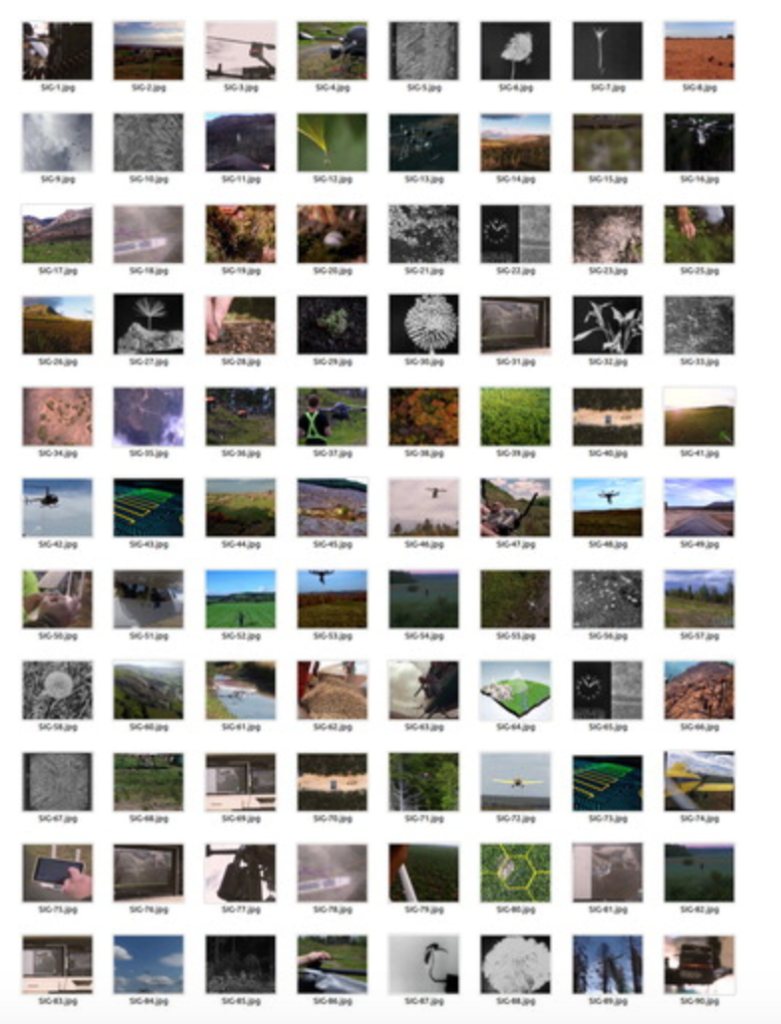
Seed, Image, Ground
The new video essay Seed, Image, Ground is the most recent example of our collaborative work with Abelardo Gil-Fournier emerging from our project on vegetal surfaces and media aesthetics. Launched today, the video was commissioned by Fotomuseum Winterthur as part of their cluster Situations/Strike. Below the introduction text and the video! Please contact me or Abelardo for any queries related to possible video installation versions of the piece.
***
Seed, Image, Ground (2020)
Seed bombing is a technique used in forestry, agriculture, and environmental restoration where biodegradable containers filled with seeds and soil nutrients are dropped from flying aircrafts to the ground. Conceived after WW2 by an RAF pilot, its use has been fostered during the last decade, linked to the increased deployment of robotic aerial vehicles in environmental monitoring.
Seed, Image, Ground works with selected promotional images and videos related to seed bombing. It combines them with footage showing the movements of seeds and leaves, and the growth of plants. The video essay concerns the link between images, seeds, aerial operations, and transformation of earth surfaces into data. It acknowledges how the history of botanic knowledge and visual surveys of green surfaces is a history of images, and how the latter is also a history of circulation, speed, and motorised aircraft. Such images operate much beyond visuality.
Seed, Image, Ground offers an alternative way of understanding “the strike.” From metaphors of war to guerrilla farming, from agricultural techniques and reforesting to the automation of airspace and environmental management, the observation of growth of vegetal surfaces unveils connections to parallel histories of the logistics of military perception.
Sound design by María Andueza Olmedo. Research for the video essay was supported by the project Operational Images and Visual Culture, situated at the department of Photography at the Academy of Performing Arts, Prague. The project is funded by Czech Science Foundation project 19-26865X.
A Recursive Web of Models: Studio Tomás Saraceno’s Working Objects
My article on Studio Tomás Saraceno’s work is now out in the Configurations journal.

The text follows up from the Palais de Tokyo show On Air (curated by Rebecca Lamarche-Vadel) and I’ve tried to articulate these points in the article in a couple of different contexts. While there is clearly lots (more) to be said about questions of artistic practices with animals (including multispecies ethnography), and what that implies for the field of environmental humanities, I am here a tad more focused on the question of the image, the model, and the exchange between art and science. Admittedly, “art and science” is a rather low res description of many of the actual workings of what happens in such practices, which is also why I have mobilised the term working objects (hat tip to Daston and Galison) in this context (while I acknowledge that so much more could be said). And keep your eyes open for Sasha Engelmann’s work on Studio Saraceno’s work btw.
In the meantime, see also the video “Studio Visit with Tomás Saraceno“.



